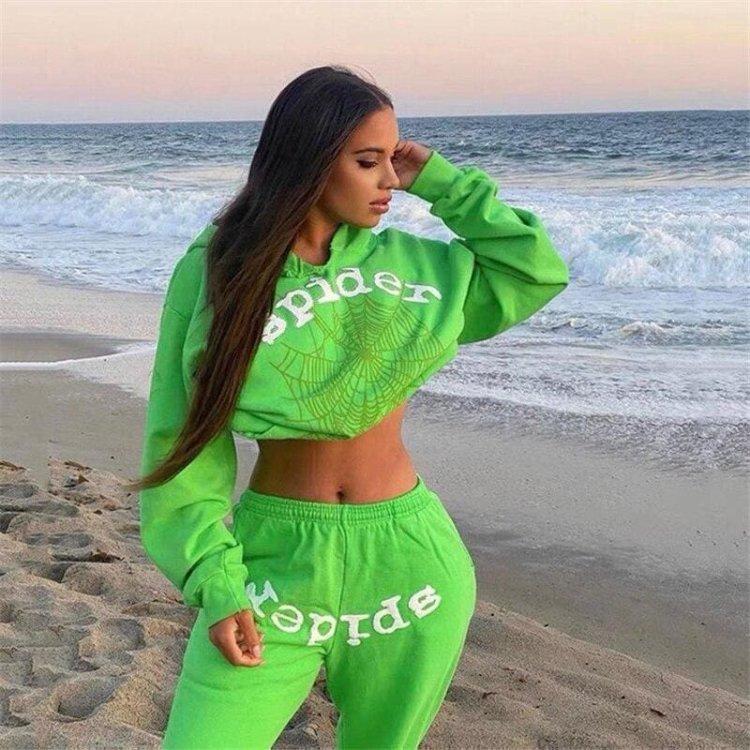Circular Fashion Is the Future of Sustainable Style
Circular Fashion Is the Future of Sustainable Style

What Is Circular Fashion?
Circular fashion is a revolutionary approach to clothing and textile production that prioritizes sustainability, longevity, and regeneration. Visit now https://spiderofficial.us/ Unlike the traditional linear model—which follows a take-make-waste trajectory—circular fashion is designed to create a closed-loop system where materials are reused, recycled, or returned to the environment safely.
In essence, circular fashion extends the lifespan of garments by promoting reuse, repair, refurbishment, and recycling, thereby reducing environmental impact and textile waste. The goal is to eliminate the concept of "waste" entirely from the fashion ecosystem.
Why the Fashion Industry Needs Circularity
The Environmental Cost of Fast Fashion
The fast fashion industry is responsible for 10% of global carbon emissions and produces over 92 million tonnes of textile waste annually. Moreover, it consumes 1.5 trillion liters of water every year, polluting rivers and oceans with dyes, microplastics, and toxic chemicals.
Resource Scarcity and Global Waste Crisis
As natural resources become scarcer, the importance of maximizing material use grows. The current throwaway culture is unsustainable. Clothing is often worn just a few times before being discarded, with less than 1% of textile waste being recycled into new garments.
Principles of Circular Fashion
Design for Longevity
Designing garments that last longer is the cornerstone of circular fashion. This involves:
-
Durable materials like organic cotton, hemp, and recycled polyester
-
Timeless styles that defy seasonal trends
-
Repairability with modular components like removable buttons and zippers
Use of Sustainable Materials
Circular fashion encourages the use of biodegradable or recycled materials that require fewer resources to produce. Materials such as Tencel, recycled wool, and post-consumer cotton are central to circularity.
Product-as-a-Service (PaaS) Models
Brands are shifting from ownership to access-based models, where consumers can rent, lease, or subscribe to clothing. This approach keeps products in use longer and reduces waste.
Recycling and Upcycling
Circular fashion systems include robust reverse logistics that collect used garments and transform them into new products. Technologies like chemical recycling and mechanical fiber regeneration are advancing rapidly.
Circular Fashion in Practice
Major Brands Leading the Way
-
Patagonia: Offers a Worn Wear program that repairs and resells used gear.
-
Stella McCartney: Partners with biotech firms to explore mushroom leather and lab-grown textiles.
-
Levi's: Implements water-saving techniques and encourages denim recycling.
Startups Disrupting the Norm
Innovative startups are embedding circularity from the ground up:
-
For Days: Uses 100% recyclable fabric and offers a closed-loop "Take Back Bag."
-
The Renewal Workshop: Works with brands to repair and resell returned or damaged goods.
-
ThredUp and Depop: Popular secondhand platforms that empower consumers to extend product life cycles.
How Consumers Can Embrace Circular Fashion
Buy Less, Choose Well, Make It Last
Investing in quality over quantity helps reduce the demand for fast fashion. Shoppers can: Check it now, Sp5der hoodie
-
Choose timeless designs over seasonal fads
-
Read care labels to ensure proper maintenance
-
Prefer versatile clothing that can be styled multiple ways
Support Secondhand and Vintage Markets
Buying pre-loved fashion reduces environmental impact significantly. Vintage clothing also carries unique styles, fostering individual expression while promoting reuse.
Participate in Clothing Swaps and Rentals
Local clothing swaps, online rentals, and fashion libraries provide alternatives to constant consumption. These options are ideal for special occasions and help reduce wardrobe clutter.
Educate and Advocate
Consumer awareness is a powerful catalyst for change. By supporting brands that uphold ethical practices, demanding transparency, and spreading knowledge, individuals can drive the shift toward circular fashion.
Benefits of Circular Fashion for the Industry
Cost Savings and Operational Efficiency
Circular practices reduce reliance on virgin resources, lower production costs, and create new revenue streams through resale, repair, and rental programs.
Enhanced Brand Reputation and Customer Loyalty
Consumers increasingly prioritize sustainability. Brands that align with these values foster trust, increase loyalty, and enjoy competitive advantage.
Regulatory Compliance and Future-Proofing
Governments around the world are introducing stricter waste regulations and sustainability mandates. Adopting circular practices now ensures businesses stay compliant and prepared for future challenges.
Technology Driving Circular Fashion Forward
Blockchain for Transparency
Blockchain enables traceability of materials, verifying that products are responsibly sourced and managed through every stage of their life cycle.
AI and Data Analytics
Artificial intelligence helps forecast demand more accurately, reduce overproduction, and optimize reverse logistics for returned and used items.
Digital Product Passports
These digital IDs track a garment’s origin, materials, repairs, and recycling history, empowering consumers and brands with full lifecycle visibility.
Challenges to Circular Fashion
While promising, the shift to circular fashion isn’t without obstacles:
-
High upfront costs for new technology and infrastructure
-
Complex supply chains requiring alignment across all stakeholders
-
Consumer behavior change, which takes time and education
Yet despite these challenges, the benefits far outweigh the drawbacks, and the momentum for a more sustainable fashion system is growing.
Conclusion: The Future Is Circular
Circular fashion represents more than just a trend—it’s a critical evolution in how clothing is designed, produced, consumed, and disposed of. As environmental concerns reach a tipping point, the transition from a linear to a circular model is no longer optional; it’s imperative.
The future of sustainable style lies in innovation, collaboration, and conscious consumption. By embracing circular fashion, the industry—and each of us—can significantly reduce waste, protect our planet, and redefine the value of what we wear.
What's Your Reaction?
















.jpg)
.jpg)


